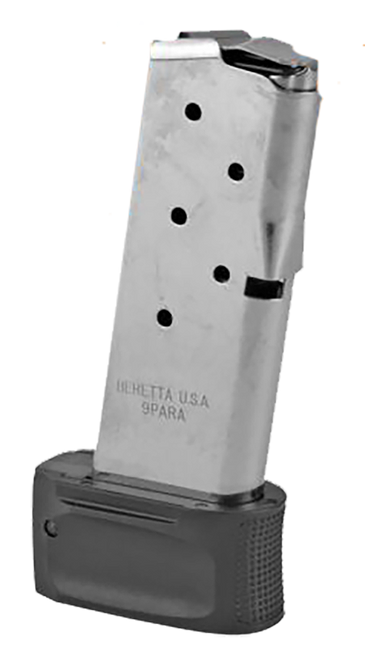The Beretta APX 21-Round Magazine extends capacity for competitive shooters and tactical professionals who demand reliable feeding in high-volume scenarios. This factory magazine maintains the same dimensional profile as standard capacity versions while adding eight additional rounds of 9mm Luger ammunition.
What Makes This Different
Unlike aftermarket extended magazines that often compromise reliability, this factory Beretta magazine undergoes the same quality control standards as original equipment. The steel construction provides superior durability compared to polymer alternatives, while the witness holes allow quick visual confirmation of remaining ammunition. Factory specifications ensure consistent feeding geometry that aftermarket options frequently fail to replicate.
Key Features
- 21-round capacity increases firepower by 60% over standard magazines
- Factory steel construction withstands repeated loading cycles
- Black oxide finish resists corrosion and wear
- Witness holes provide ammunition count visibility
- Drop-free design enables rapid tactical reloads
- Compatible with all Beretta APX pistol variants
- Factory follower and spring maintain feeding reliability
Field testing demonstrates consistent feeding across various 9mm loads, from 115-grain ball ammunition to 147-grain hollow points. The extended capacity proves valuable in competitive shooting disciplines like USPSA Production division, where stage round counts often exceed standard magazine capacity. Law enforcement and security professionals benefit from reduced reload frequency during qualification courses and tactical scenarios.
Technical Specs
- Capacity: 21 rounds of 9mm Luger
- Construction: Black oxide coated steel
- Compatibility: All Beretta APX pistol models
- Overall length: Approximately 6.2 inches
- Weight: 4.2 ounces (empty)
- Country of origin: Italy
- Manufacturer part number: JMAPX219
- UPC: 082442873480
This factory magazine eliminates the reliability concerns associated with modified or aftermarket extended magazines. Professional users who stake their performance on equipment consistency choose factory components that meet original manufacturing tolerances.









